LinkedIn is among the most sought-after social media platforms in the B2B space. Using a creative content strategy and precise targeting, you can expand your client’s organic presence, reach the target market, build a reputation, and create stronger connections. However, this can only happen if you optimize your LinkedIn page by tracking important metrics that drive the change.
LinkedIn’s native analytics allow you to monitor how your company pages and posts engage the target audience. However, to scale your LinkedIn presence and manage multiple pages, you need a customizable solution to identify key changes and make the right decision that add value to your client’s objectives.
TMR’s LinkedIn Pages Connector provides deeper insights into enhancing your clients’ LinkedIn Pages performance. Simply connect your client’s LinkedIn account, and TMR will pull important metrics, extract key insights, and help you to maximize growth – all without writing a single line of code and with encrypted security. Now, let me explain how to connect your LinkedIn Pages data via Two Minute Reports in Google Sheets.
Step 1: Install and Launch Two Minute Reports
Install Two Minute Reports if you have not done so already.
Sign in to your Google Sheets with the associated Gmail ID.
Go to Extensions > Add-ons > Get add-ons.
Search for Two Minute Reports and select Install.
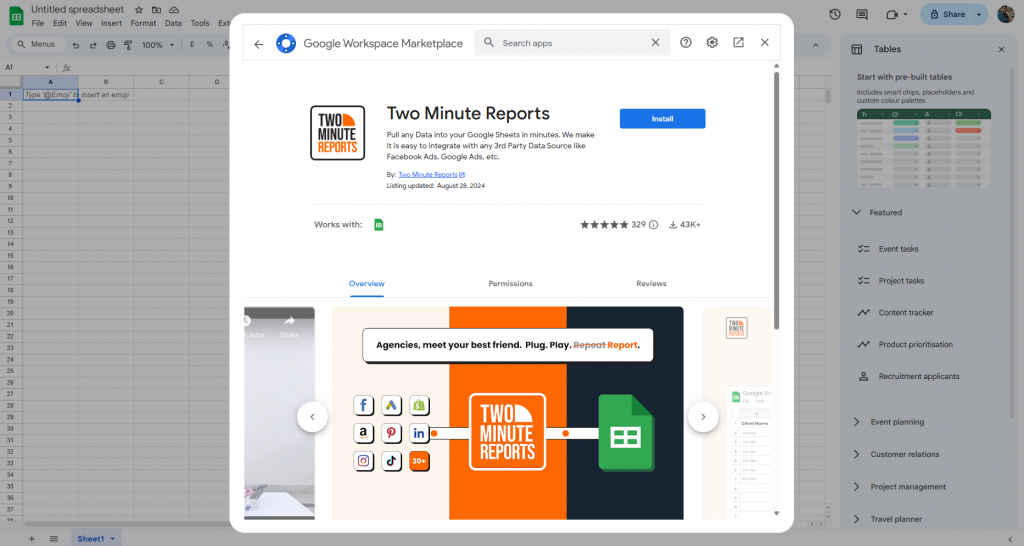
Review and accept the permissions necessary to run Two Minute Reports. Once you’ve accepted the terms and conditions, click Allow for Two Minute Reports to manage and access your data.
Note: Allow access is mandatory for TMR to function and efficiently analyze your data.
Next, open your Google Sheets and go to Extensions > Two Minute Reports > Launch.
Once your TMR sidebar opens, you can connect your data sources and run queries.
Step 2: Connect LinkedIn Pages to Google Sheets
Click Menu at the top left of the sidebar to navigate to the Data Sources section. If you see an onboarding popup, please proceed with it or minimize it by clicking the inverted arrow.
Click Add, name your data source, and select your data source type as LinkedIn Pages from the Social Media dropdown.
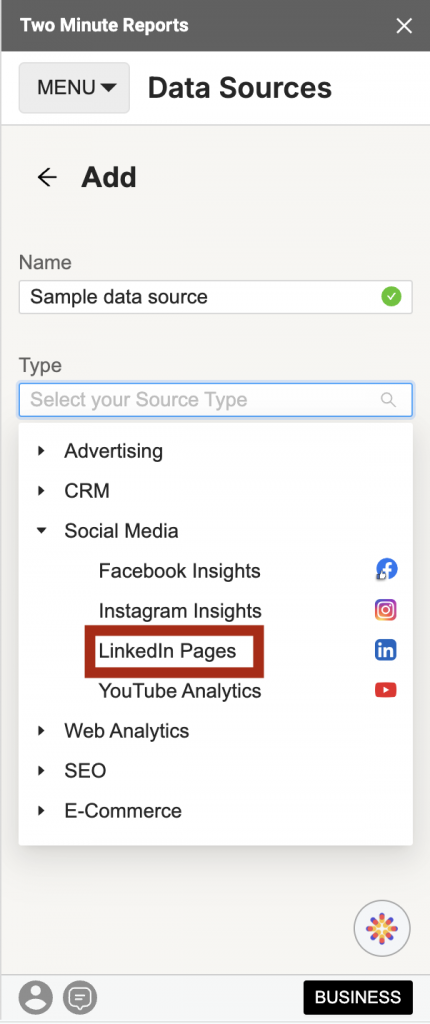
Once you click on LinkedIn Pages, you’ll be prompted to sign in with your LinkedIn account. After connecting your LinkedIn account, click Yes to authenticate the login.
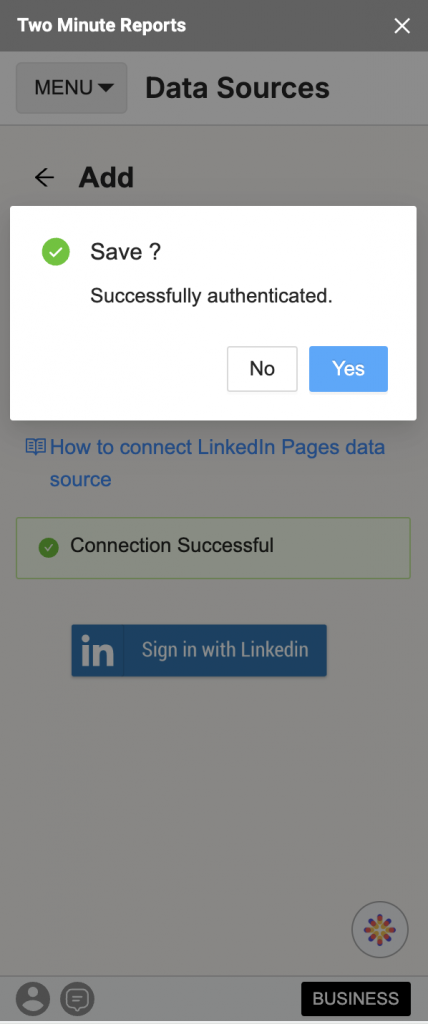
Note: If you get an error message, please check whether you’ve signed in with the correct LinkedIn account.
Step 3: Getting LinkedIn Pages data in Google Sheets
To pull your LinkedIn Pages data, navigate to the Data Queries section and create a new query.
Click Add and choose the LinkedIn Pages account to analyze the performance. You can manage multiple client’s LinkedIn Pages under one roof. Simply select one or more accounts to analyze performance.
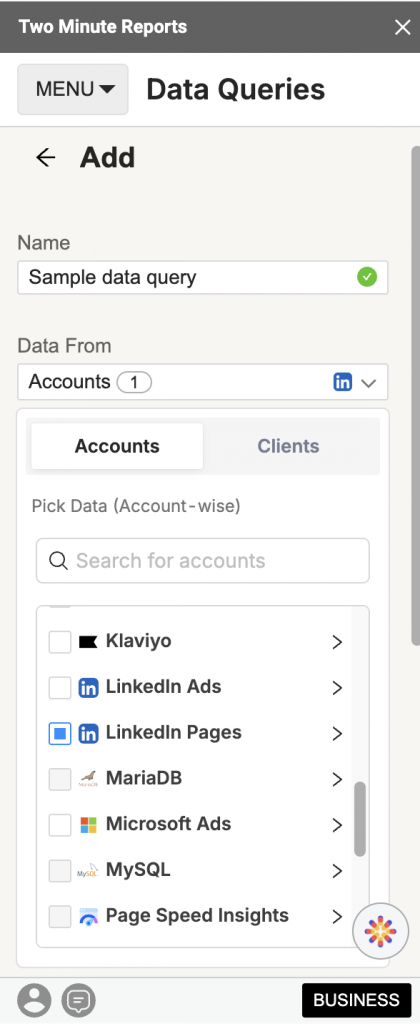
Alternatively, you can navigate to the Clients section. Add your client and map their corresponding LinkedIn Pages account.
Click “Manage Clients” and enter the necessary account details. Once done, click “Save & Close” to save your client’s details for future reference.
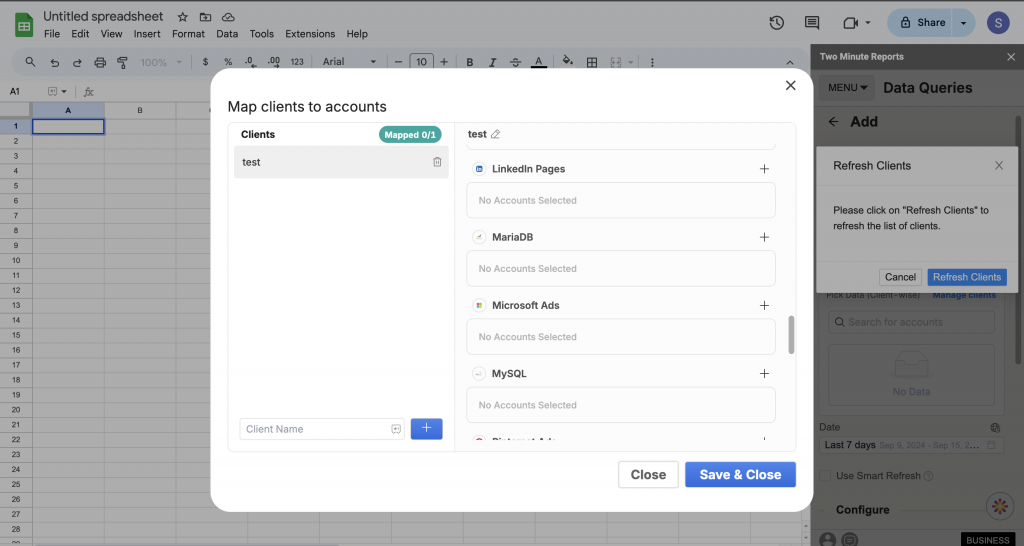
Note: You can add multiple clients and map their respective ad accounts. Doing so saves you tons of wasted hours from manually juggling numerous data sets. You can get a unified view of your client campaigns and track key metrics in a centralized dashboard. For further information, please read our guide – How to Create Queries Using Clients?
Next, add the metrics and dimensions to assess your LinkedIn Pages performance. For a better understanding, refer to the screenshot below.
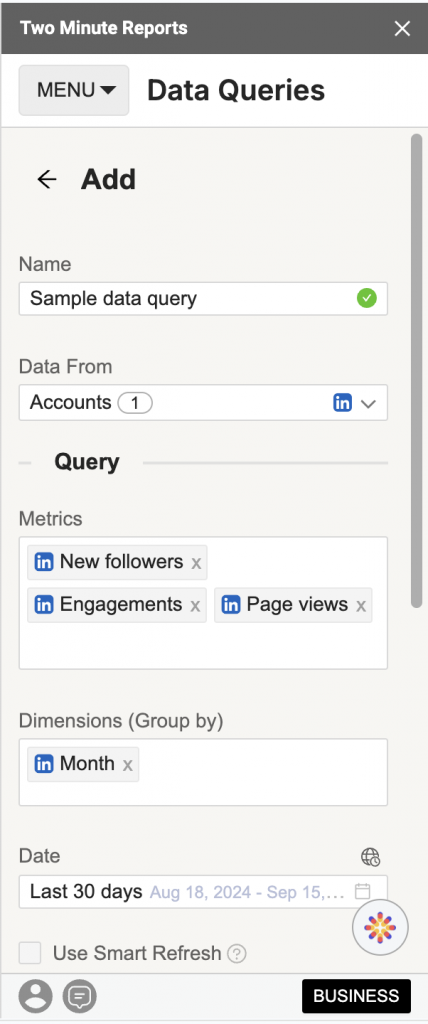
Next, you have to configure your data reporting by choosing how to customize it.
It would be best to customize your data reporting by selecting the relevant fields and choosing whether to sort them in ascending or descending order. You can also apply custom filters to display only the necessary information.
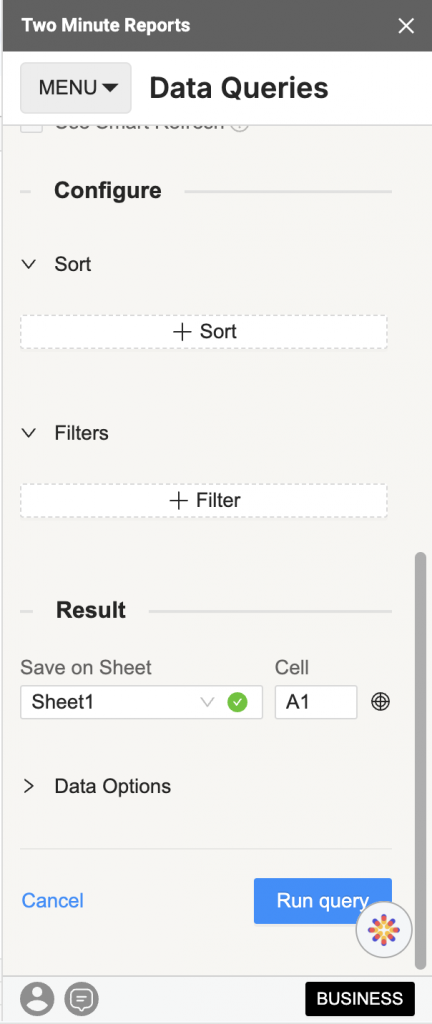
Once you’ve completed the above steps, click Run Query to visualize the final output.
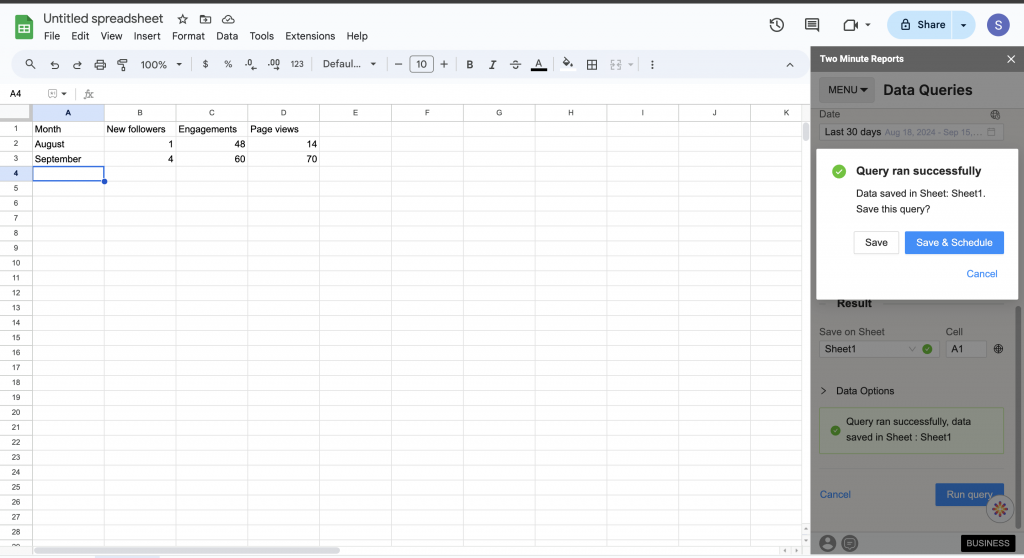
Now, you can use different Google Sheet features, such as pivot table and VLOOKUP(), to extract critical insights and build charts to visualize your campaign performance.
Pro TMR Tip: Run all your queries directly from the Extensions menu on your Google Sheets. Go to Extensions > Two Minute Reports > choose your desired quick action.
Step 4: (Optional) Get automatic data updates via Schedule Refresh
Once you create a report in Google Sheets, you can schedule automatic updates to get updated data. This feature is convenient for sending emails or refreshing your spreadsheets with live data and using them as a dashboard.
Under the email section, you can enter the recipient(s)’s email ID and save the new schedule.
You can also choose to specify the reporting format. You can insert the sheet content in the email body, attach the selected sheet as a PDF or Excel, or attach the spreadsheet as an Excel file.
Two Minute Reports’s schedule refresh or data refresh feature has other capabilities. For more information, please read our guide, “How to Refresh Data Automatically in Google Sheets.”
We hope you found this guide helpful. If you have any questions, please get in touch with our support team via chat or support@twominutereports.com